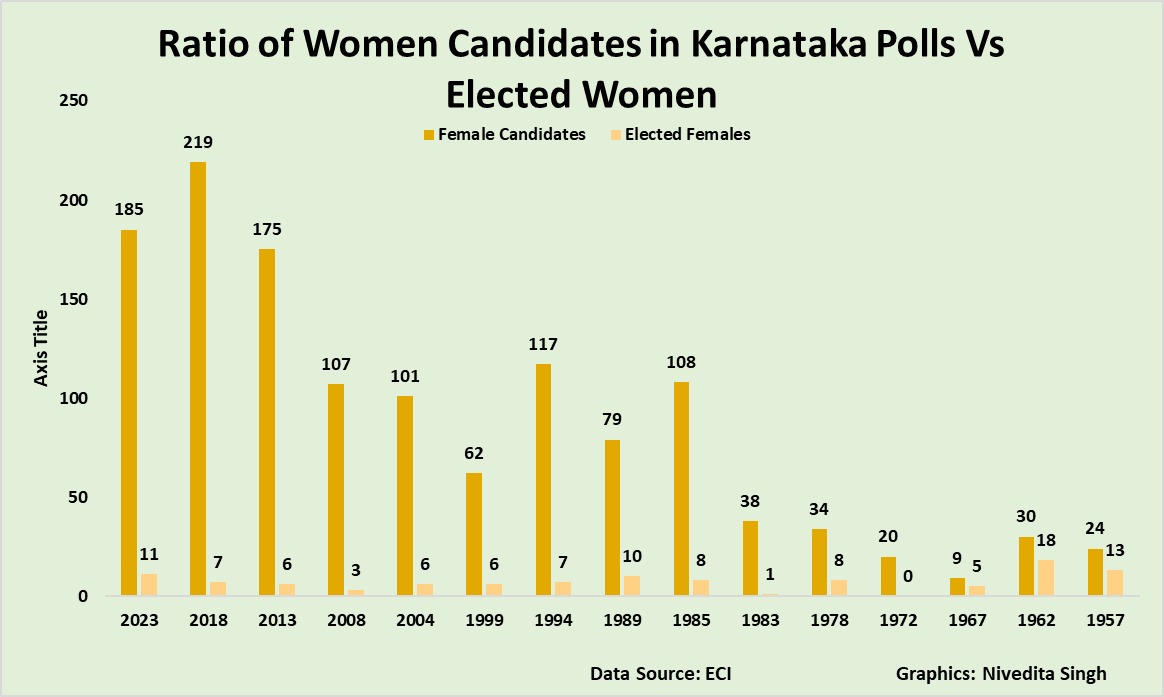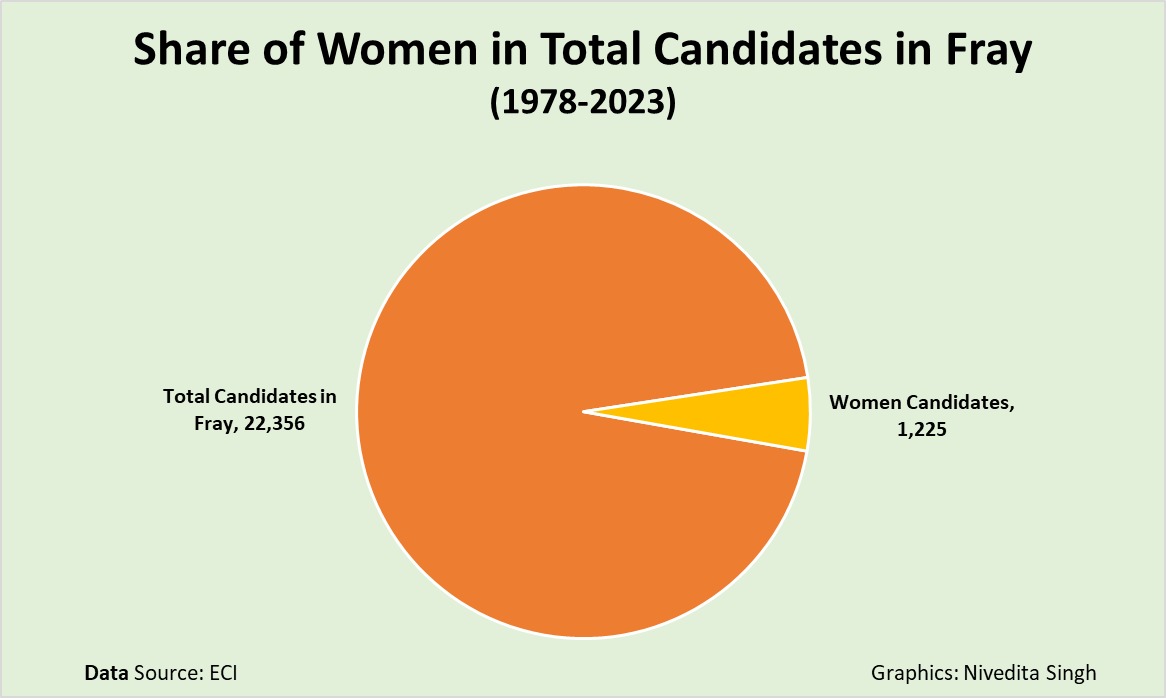[ad_1]

Eleven women have been elected to the 224-member Karnataka legislative assembly; the highest five from the BJP, four from the Congress and none from the JD(S). One independent candidate was also elected to the House. (Image: News18)
If the long pending demand for 33% women’s reservation in legislatures were to be met, the Karnataka assembly would have at least 74 females. Since 1978, only 73 women have been elected to the House, including 11 this term
Women’s representation may have slightly improved in the Karnataka assembly elections as compared to the last few polls, but it is still much below the 10 percent mark. Even though Karnataka has never had a woman chief minister to date, the scope of this happening this time is close to none.
Major political parties in India have spoken about enhanced women’s representation and verbally supported the 33 percent women’s reservation bill. But when it comes to giving space to women in their own parties, the picture remains grim, shows data from the Election Commission of India (ECI) analysed by News18.
The three main political parties – BJP, Congress and JD(S) – fielded few women in the polls. The JD(S) named 13 women while the BJP had 12 and the Congress had released a candidate list with only 11 women. At least 64 women candidates contested independently.
In the results announced on Saturday (May 13), a total of 11 women have been elected to the 224-member legislative assembly; the highest five from the BJP, four from the Congress and none from the JD(S). One independent female candidate was also elected to the assembly. In the previous assembly elections in 2018, seven women were elected to the House while, before that, six were elected in 2013.
In terms of total candidates in the fray, women’s representation was low. Out of 2,615 candidates in the fray, only 185 were women and, of these, only 11 made it to the House.
If the long pending demand for 33 per cent reservation to women in legislatures across India were to be fulfilled, the Karnataka assembly would have at least 74 women. But the state could not even elect these many women in the last 45 years. Only 73 women have been elected to the House, including 11 this term. It was in 1989 when the state last had women’s representation in the assembly in double digits when 10 women were elected.
Political parties have long promised 33 percent reservation to women in legislatures. The Congress made the promise in its manifestos in 2019, 2014 and 2009 Lok Sabha elections. The BJP, too, did so in 2019 and 2014 Lok Sabha elections. But these parties could not implement the promise and the number of women MPs and MLAs across India remains significantly low.
In the last 20 years, or the last four assembly polls, just 33 women have made it to the assembly in the state.
While data for the number of candidates who lost their deposit is yet to be made public for this assembly poll, in the last election, at least 92 percent women candidates lost their deposit. Further, between 1978 and 2018, 83 percent women candidates have lost their deposit, which is 864 out of 1,040 women candidates.
What makes Karnataka interesting is that in at least 50 percent seats, women voters outnumbered men. And this has been the picture for the past few decades. In 1978, around 50 percent of the voters in the state were females and the polling percentage was around 68 percent. For men, the polling percentage was 76 percent. In 2023, out of the state’s 5.30 crore voters, 2.63 crore were females and 2.66 crore were males.
Between 1978 and 2023, at least 22,170 candidates contested the assembly polls in Karnataka. Of these, just 1,225 were women.
[ad_2]





